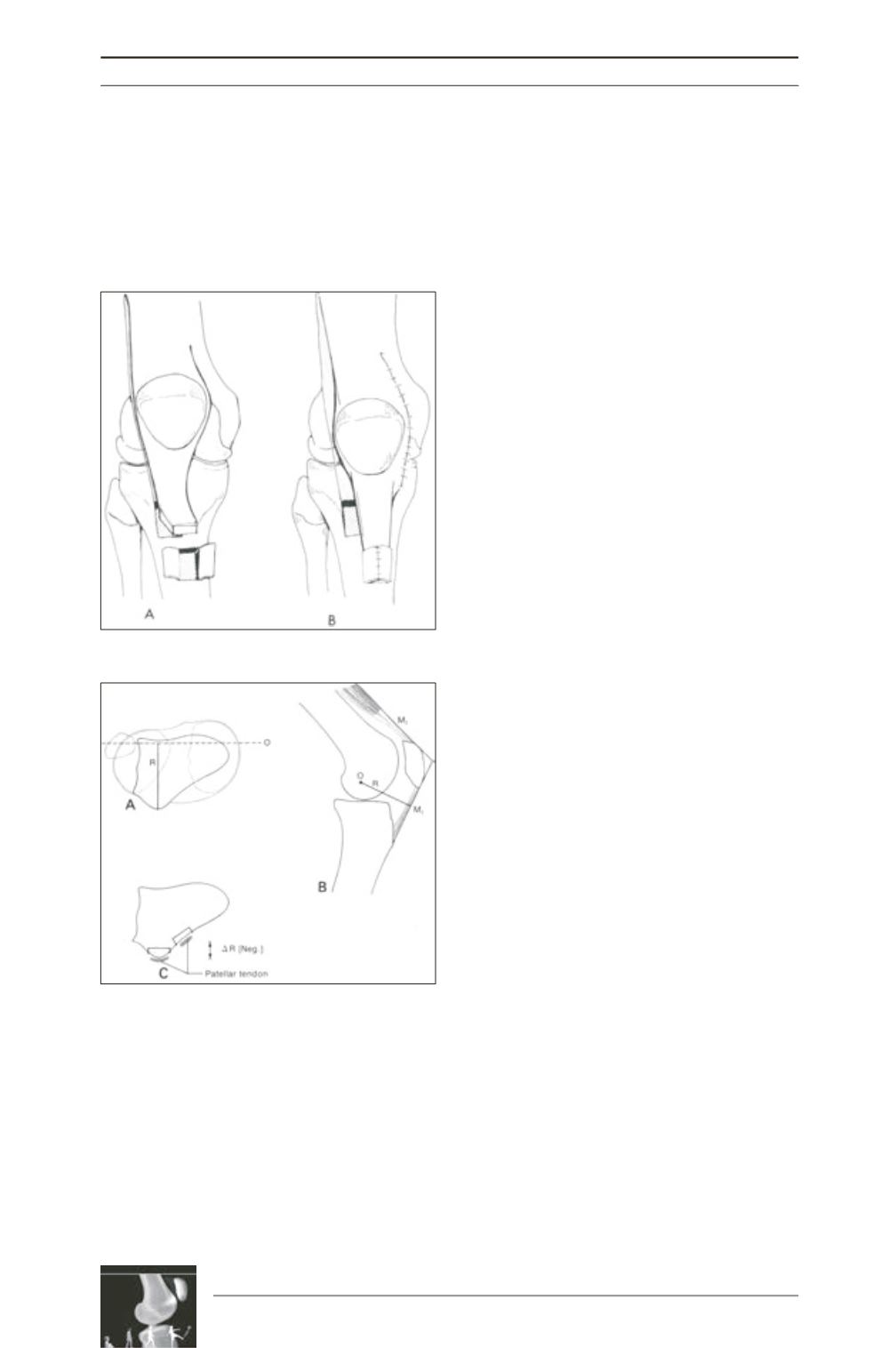

A. Wymenga
84
the transfer a lateral release andmedial plication
was performed. Although the early results were
encouraging later long term reports indicated
and accelerated osteoarthritis caused by the
increased contact pressures on the patello
femoral joint (fig. 4).
After the publications of Trillat the Lyon school
further developed the analysis of the
pathophysiology of patellofemoral instability
and pain. Subsequently scientific papers were
reported in the English speaking arena. An
important publication was the paper by Dejour
in 1994 in KSSTA 1994 summarizing the
complete concept of quadriceps dysplasia,
patella alta, the trochlea dysplasia and the
pathological lateralisation of the tuberosity as
the four cornerstones that play a role in
objective patellofemoral instability and
potential patellofemoral instability (ref). The
current medial soft tissue repair of the MPFL
was not included in the concept but a reefing
was suggested with more than 20 degrees tilt as
measured on CT scans.
Approaches in Europe
and US in time
In Europe the Hauser procedure was frequently
performed but subsequently abandoned due to
the increased patellofemoral arthritis osteo
arthritis. This observation kept many surgeons
from using the modified Trillat operation which
does not increase the patellofemoral pressure
as opposed to the Hauser technique.
Hampson
et al.
(ref) reported arthrosis caused
by the posteriorisation after the Hauser
procedure. Arnbjornsson et al reported in 1992
in the JBJS a high percentage of arthrosis in
conservative and operatively treated patello
femoral instability. It also became clear that the
tuberosity transfers done for undefined pain
without a lateral tuberosity position had poor
results due to overmedialisation and creating
medial patellofemoral arthritis (Crelsamer).
Another problem was the limited successes of
the soft tissue procedures available at that time
such as the Galeazzi procedure (semitendinosus
tenodesis) and the Krogius plasty (medial
reefing with lateral release) and Green plasty
and later the lateral release epidemic.
Despite the hesitations to operate on the
patellofemoral joint due to lackof understanding
of the pathology and the less favourable
outcomes a number of papers reported on the
Trillat operation. On average they found around
80% good results in terms of pain and stability
after the procedure.
Trillat (1974) reported 78% good/excellent
results and 92% improved. Morshuis and
Fig. 3: Hauser procedure
Fig. 4: Biomechanical effect Hauser procedure











